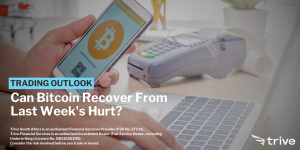
The Organization of the Petroleum Exporting Countries (OPEC), often working alongside non-member oil producers in the OPEC+ alliance, holds regular meetings to discuss production quotas, a significant event for the oil market.
These meetings can trigger significant price movements, attracting the attention of both seasoned traders and those new to the world of oil futures. But how do you navigate the market around these impactful events?
Understanding the Fundamentals:
The core element influencing oil prices during the OPEC meeting revolves around production decisions or quotas. If the organization decides to increase production, it can lead to a decline in oil prices due to an increase in supply. Conversely, a production cut can bolster prices due to tighter supply. However, it’s not as simple as one decision dictating the outcome. Here’s what you need to consider:
- Market Expectations: The market’s pre-meeting expectations play a crucial role. If the decision aligns with these expectations, the impact on prices might be muted. However, a surprise decision, especially a production cut exceeding expectations, could trigger a sharp price increase.
- Geopolitical Tensions: Ongoing geopolitical tensions, particularly in major oil-producing regions, can add a layer of uncertainty and potentially propel prices upward even if OPEC+ decides to increase production.
Examining the Technical Landscape:
While fundamentals paint the big picture, technical analysis can provide valuable insights into potential price movements around the meeting. Here are some key technical aspects to consider:
- Price Action Leading Up to the Meeting: Observe how oil prices behave in the days and weeks leading up to the meeting. A sustained upward movement could indicate market anticipation of a production cut, while a downward trend might suggest expectations of increased production.
- Support and Resistance Levels: Identify key technical support and resistance levels on the oil price chart. These levels might become crucial breakout points if the OPEC+ decision triggers a significant price movement.
- Trading Volume: Monitor trading volume closely. Spikes in volume often accompany significant price movements, and observing volume changes around the meeting announcement can provide insights into market sentiment.
Exploring Trading Strategies:
While the OPEC+ meeting can present potential trading opportunities, it’s crucial to remember that trading always carries inherent risks. Here are some general trading strategies to consider, but remember, these are for educational purposes only and do not constitute financial advice:
- Directional Trading: Based on your analysis of both fundamental and technical factors, you can take a directional trade, buying if you anticipate a price increase due to a production cut or selling if you expect a price decline due to increased production.
- Volatility Trading: Regardless of the direction, the OPEC+ meeting can lead to increased market volatility. Options trading strategies can be employed to capitalize on this volatility, allowing you to profit from price movements without necessarily predicting the direction.
- Hedging: If you hold existing positions in oil-related assets, consider hedging strategies to mitigate potential risks associated with the OPEC+ meeting outcome.
Case Study: Trading the Week of OPEC Meetings:

It’s important to acknowledge that past performance is not necessarily indicative of future results. However, looking at historical data can provide some context. While every OPEC meeting is unique, based on data from the past ten meetings, oil futures have experienced weekly declines in eight of them, with an average decline of 6.16%. However, there have also been exceptions, with meetings in October 2022 and April 2023 recording significant gains of 16.88% and 6.29%, respectively.
While these figures can offer a starting point for understanding historical trends, it’s crucial to remember that every OPEC meeting is unique, and the outcome can be influenced by a multitude of factors.
Remember:
- The OPEC+ meeting is just one factor influencing oil prices, and other market forces like global economic conditions and unexpected events can also play a significant role.
- Do your own thorough research and analysis before making any trading decisions. This includes not only the latest oil market trends but also your own risk tolerance and financial goals.
Summary:
By understanding the fundamentals, technicals, and potential trading strategies, you can be better equipped to navigate the market movements surrounding the OPEC meeting. Remember, thorough research, risk management, and a neutral perspective are crucial when it comes to navigating the ever-evolving world of oil futures trading.
Sources: TradingView, Trading Economics, OPEC+, EIA.
Piece written by Mfanafuthi Mhlongo, Trive Financial Market Analyst
Disclaimer: Trive South Africa (Pty) Ltd (hereinafter referred to as “Trive SA”), with registration number 2005/011130/07, is an authorised Financial Services Provider in terms of the Financial Advisory and Intermediary Services Act, 37 of 2002. Trive SA is authorised and regulated by the South African Financial Sector Conduct Authority (FSCA) and holds FSP number 27231. Trive Financial Services Ltd (hereinafter referred to as “Trive MU”) holds an Investment Dealer (Full-Service Dealer, excluding Underwriting) Licence with licence number GB21026295 pursuant to section 29 of the Securities Act 2005, Rule 4 of the Securities Rules 2007, and the Financial Services Rules 2008. Trive MU is authorized and regulated by the Mauritius Financial Services Commission (FSC) and holds Global Business Licence number GB21026295 under Section 72(6) of the Financial Services Act. Trive SA and Trive MU are collectively known and referred to as “Trive Africa”.
Market and economic conditions are subject to sudden change which may have a material impact on the outcome of financial instruments and may not be suitable for all investors. Trive Africa and its employees assume no liability for any loss or damage (direct, indirect, consequential, or inconsequential) that may be suffered. Please consider the risks involved before you trade or invest. All trades on the Trive Africa platform are subject to the legal terms and conditions to which you agree to be bound. Brand Logos are owned by the respective companies and not by Trive Africa. The use of a company’s brand logo does not represent an endorsement of Trive Africa by the company, nor an endorsement of the company by Trive Africa, nor does it necessarily imply any contractual relationship. Images are for illustrative purposes only and past performance is not necessarily an indication of future performance. No services are offered to stateless persons, persons under the age of 18 years, persons and/or residents of sanctioned countries or any other jurisdiction where the distribution of leveraged instruments is prohibited, and citizens of any state or country where it may be against the law of that country to trade with a South African and/or Mauritius based company and/or where the services are not made available by Trive Africa to hold an account with us. In any case, above all, it is your responsibility to avoid contravening any legislation in the country from where you are at the time.
CFDs and other margin products are complex instruments and come with a high risk of losing money rapidly due to leverage. You should consider whether you understand how these products work and whether you can afford to take the high risk of losing your money. Professional clients can lose more than they deposit. See our full Risk Disclosure and Terms of Business for further details. Some or all of the services and products are not offered to citizens or residents of certain jurisdictions where international sanctions or local regulatory requirements restrict or prohibit them.




